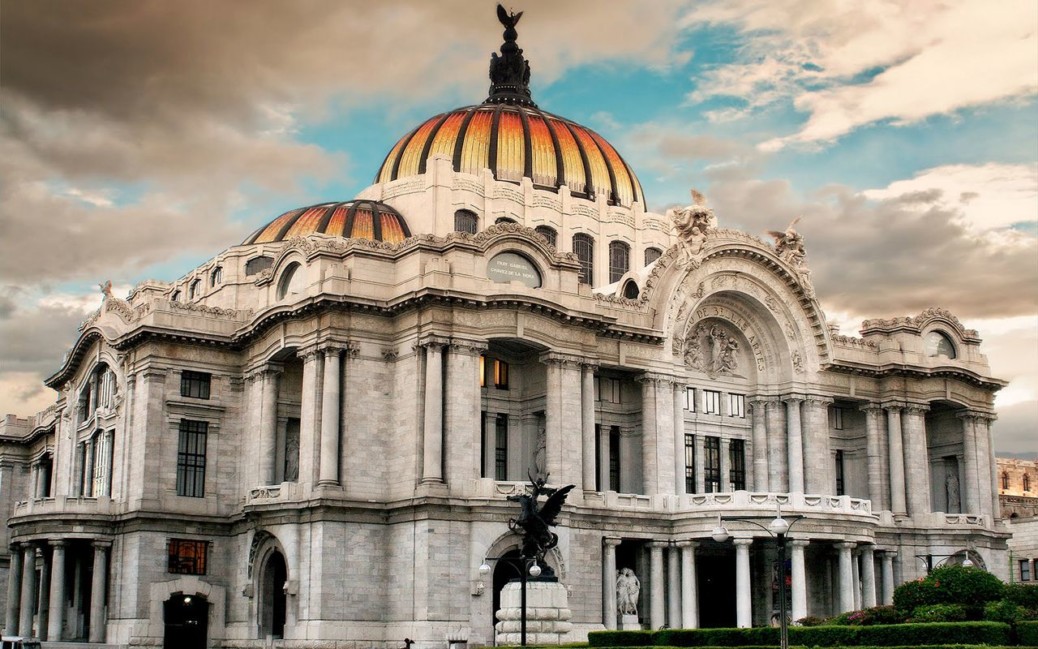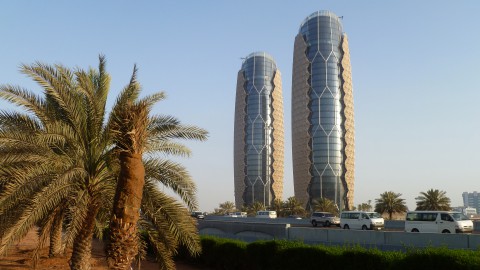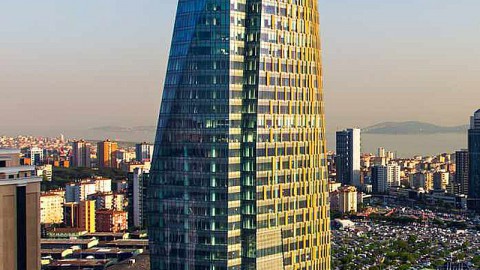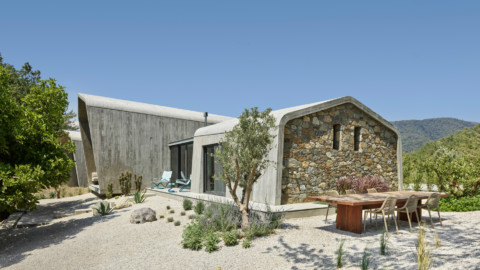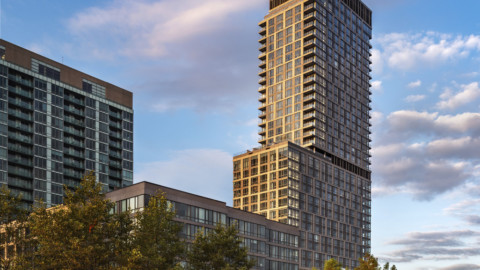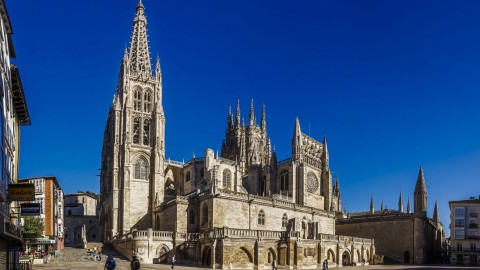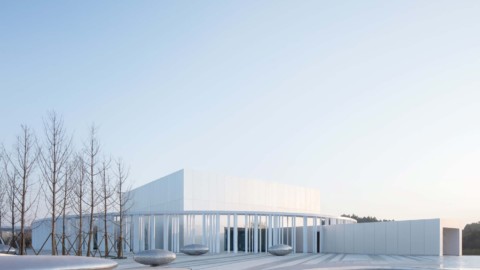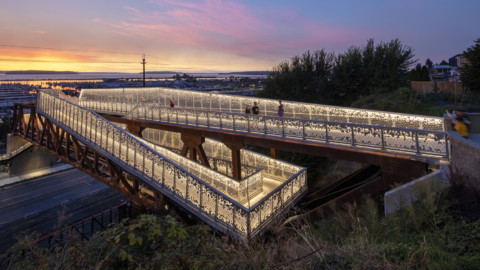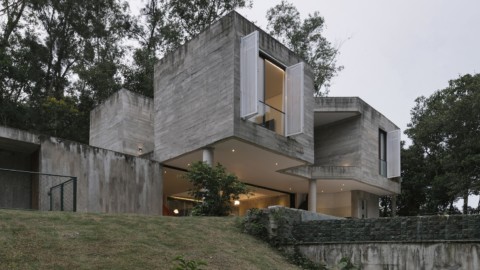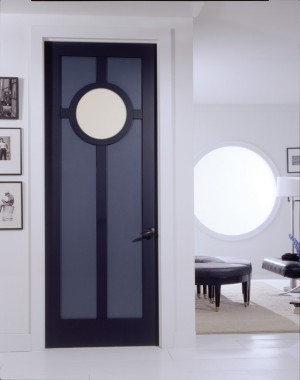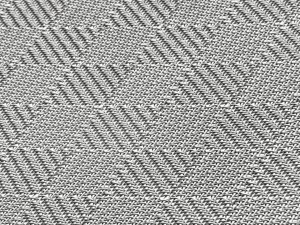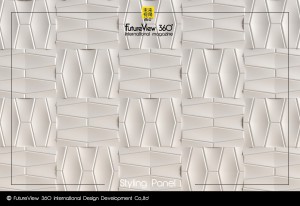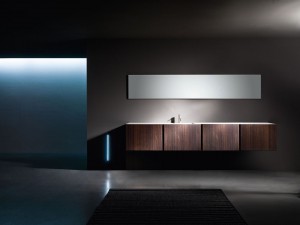Palacio de Bellas Artes (Ciudad de México) 美術宮(墨西哥城)
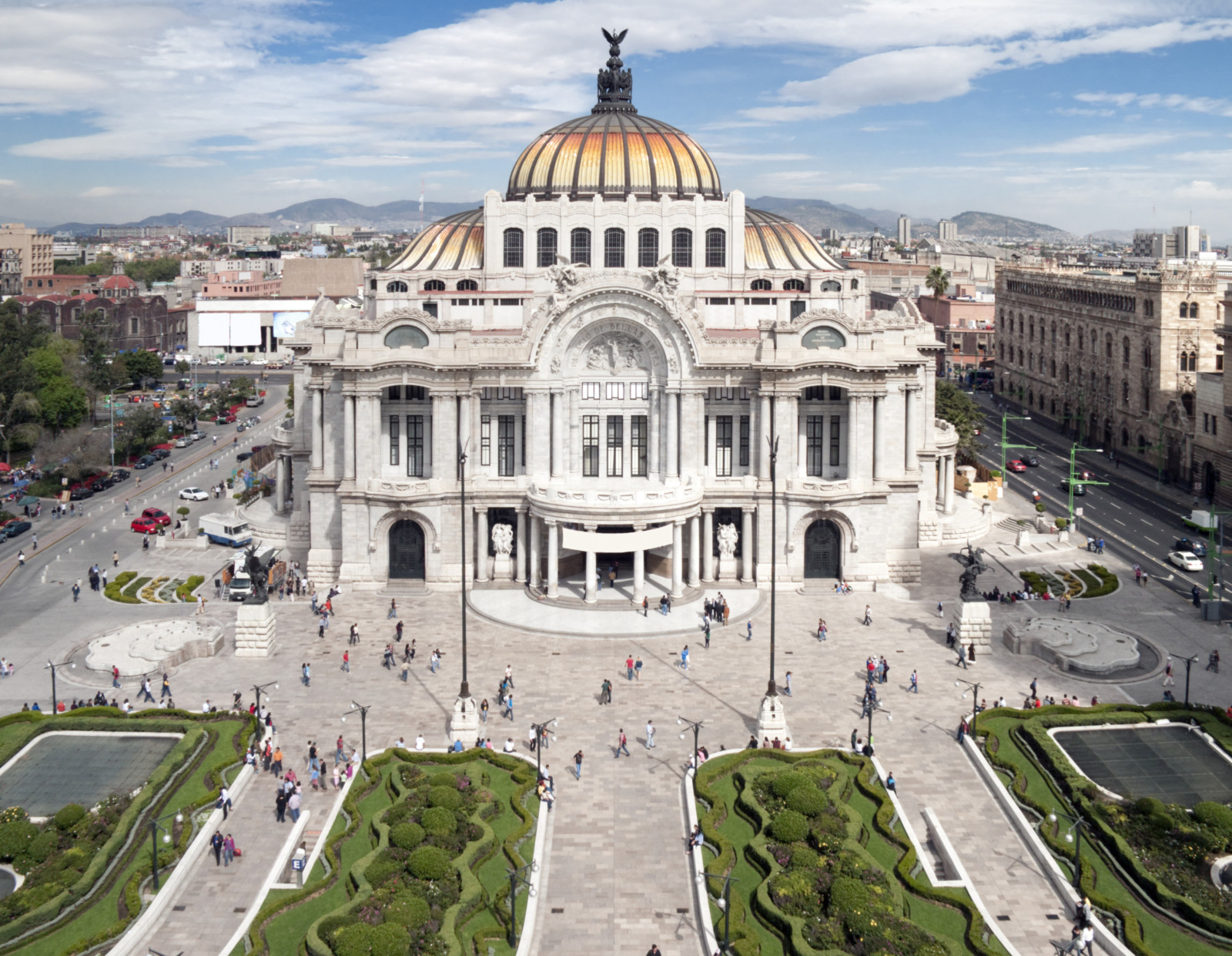
El Palacio de Bellas Artes es un recinto cultural ubicado en el Centro Histórico de la Ciudad de México, considerado el más importante en la manifestación de las artes en México y una de las casas de ópera más renombradas del mundo.
Este ha sido escenario y testigo de impactantes acontecimientos tanto artísticos, como sociales y políticos; su construcción data del final de mandato de Porfirio Díaz, por encargo del presidente mexicano con motivo de la celebración del centenario del inicio de la Independencia de México, sin embargo fue inaugurado hasta el 29 de noviembre de 1934 tras el estallido de la Revolución mexicana. Como institución, depende del Instituto Nacional de Bellas Artes (INBA), parte de la Secretaría de Cultura del gobierno federal. En 1987 fue declarado por la Unesco como monumento patrimonio de la humanidad.
En su interior alberga diversos escenarios y salas para la práctica y exposición de obras. El Museo Palacio de Bellas Artes y el Museo Nacional de Arquitectura se alojan dentro, el primero exhibe de forma permanente 17 obras murales de siete artistas nacionales ejecutadas de 1928 a 1963, entre ellos Diego Rivera, David Alfaro Siqueiros y José Clemente Orozco, siendo el más antiguo en el país dedicado a la producción plástica nacional. Así también, es sede de la Orquesta Sinfónica Nacional, la Compañía Nacional de Ópera (Ópera de Bellas Artes), la Compañía Nacional de Danza y del Ballet Folklórico de México de Amalia Hernández.
墨西哥文化藝術歷史博物館,墨西哥歷史文化中心,墨西哥歷史悠久的藝術博物館和墨西哥國家藝術博物館。
Este ha sido escenario y testigo de Impactantes acontecimientos tantoartísticos,como sociales ypolíticos;墨西哥總統個人資料的最終解釋權,以及墨西哥獨立紀念日的墨西哥總統致函,1934年因禁運而被取消的禁令。科莫研究所,貝拉爾·阿泰斯國家立大學(INBA),聯邦文化部秘書。 1987年聯合國教科文組織世界人道主義紀念日。
在室內進行全景拍攝,並在室內觀看投影片和投影片。國家藝術博物館和國家博物館,永久形式的入門書,1928年至1963年的國家藝術博物館,迭戈里維拉,大衛·阿爾法羅·西科里奧斯和何塞·克萊門德國民生產和銷售產品。墨西哥國家歌劇院,西班牙國家歌劇院,西班牙國家歌劇院(西班牙貝拉·阿特斯),丹麥國家舞蹈團和巴西芭蕾舞團(墨西哥)阿瑪利亞·埃爾南德(AmaliaHernández)。
Localización
País:México
Ubicación:Centro Histórico, Ciudad de México
Coordenadas:19°26′08″N 99°08′29″OCoordenadas: 19°26′08″N 99°08′29″O (mapa)
Información general
Usos:ópera, danza, teatro, museo, galería de arte, librería, restaurante
Estilo:art nouveau, art decó
Catalogación:Monumento Artístico
Declaración:4 de mayo de 1987
Inicio:2 de agosto de 1904
Finalización:29 de noviembre de 1934
Capacidad:2255
Altura:53 m
Diseño y construcción
Arquitecto:Adamo Boari, Federico Mariscal
Ingeniero estructural:Francisco Javier Alejandro Octavio Gómez de la Serna
Ingeniero civil:Gonzalo Garita
本地化
佩斯:墨西哥
烏比卡西翁(Ubicación):墨西哥歷史中心(CentroHistórico),墨西哥城
Coordenadas:19°26′08″ N 99°08′29″ Ooordenadas:19°26′08″ N 99°08′29″ O(mapa)
一般信息
Usos:ópera,danza,teatro,museo,galeríade arte,librería,restaurante
Estilo:新藝術風格,裝飾藝術
Catalogación:MonumentoArtístico
聲明:1987年5月4日
歷史:1904年2月2日
結業:1934年新電影節
Capacidad:2255
奧圖拉:53 m
Diseñoyconstrucción
Arquitecto:Adamo Boari,費德里科·馬里斯卡爾(Federico Mariscal)
工程結構:Francisco Javier Alejandro OctavioGómezde la Serna
Ingeniero civil:貢薩洛·加里塔(Gonzalo Garita)
Architecture and distribution 體系結構和發行
The height of the building is 53 meters to the spiral and 42.5 m to the roof. It has 4 floors and underground parking. Due to the difference in the beginning and construction times, the palace has several architectural styles, predominantly art nouveau outside and art deco inside.
The Palace is seated on a peculiar clay called Montmorillonite and this causes a continuous sinking of the palace. The sinking of the ground began to manifest itself in 1907 and by 1921 it had already sunk more than 1.80 meters. To date, this phenomenon can be seen, as the palace is several meters below street level. The main facade, which overlooks Avenida Juárez, is made of Carrara marble. Inside the portal there are sculptures of the Italian Leonardo Bistolfi, consisting of “Harmony”, surrounded by “Pain”, “”, “Happiness”, “Peace” and “Love”. Another part of the facade contains cherubs and sculptures that represent music and inspiration. In front of the building’s square, designed by Boari, there are four Pegasus sculptures that were made by the Catalan Agustí Querol Subirats, these had been in the Zocalo before being brought here. The roof covering the center of the building is made of glass designed by the Hungarian Géza Maróti and represents the muses with Apollo. A structure of the palace that disappeared is the Pergola that was located on the west side of the palace, in the Alameda Central. It was built to house pictorial exhibitions for the 1910 celebrations and for decades housed a bookstore being demolished in 1973. In 1982 works were carried out for the construction of an underground parking lot.
建築物的高度到螺旋線53米,到屋頂42.5 m。它有4層樓,設有地下停車場。由於開始和建造時間的不同,宮殿有幾種建築風格,主要是新藝術風格和內部裝飾藝術。
宮殿坐落在一種名為蒙脫石的特殊粘土上,這會導致宮殿不斷下沉。地面沉沒於1907年開始顯現,到1921年已經沉沒超過1.80米。迄今為止,這種現象可以看到,因為宮殿在街道水平以下幾米處。主立面採用卡拉拉大理石製成,可俯瞰華雷斯大街(AvenidaJuárez)。門戶內有意大利列奧納多·比斯托爾菲(Leonardo Bistolfi)的雕塑,由“和諧”組成,周圍環繞著“痛苦”,“”,“幸福”,“和平”和“愛”。立面的另一部分包含代表音樂和靈感的小天使和雕塑。在由Boari設計的建築物廣場前,有四幅由加泰羅尼亞人AgustíQuerol Subirats製作的飛馬雕塑,這些雕塑在被帶到這里之前就已經出現在Zocalo中。覆蓋建築物中心的屋頂由匈牙利GézaMaróti設計的玻璃製成,代表著阿波羅博物館。宮殿的結構消失了,是涼亭,它位於宮殿的西側,阿拉米達中央。它的建成是為了舉辦1910年慶祝活動的繪畫作品展覽,幾十年來,這座房子的書店於1973年被拆毀。1982年,進行了地下停車場的建設工程。
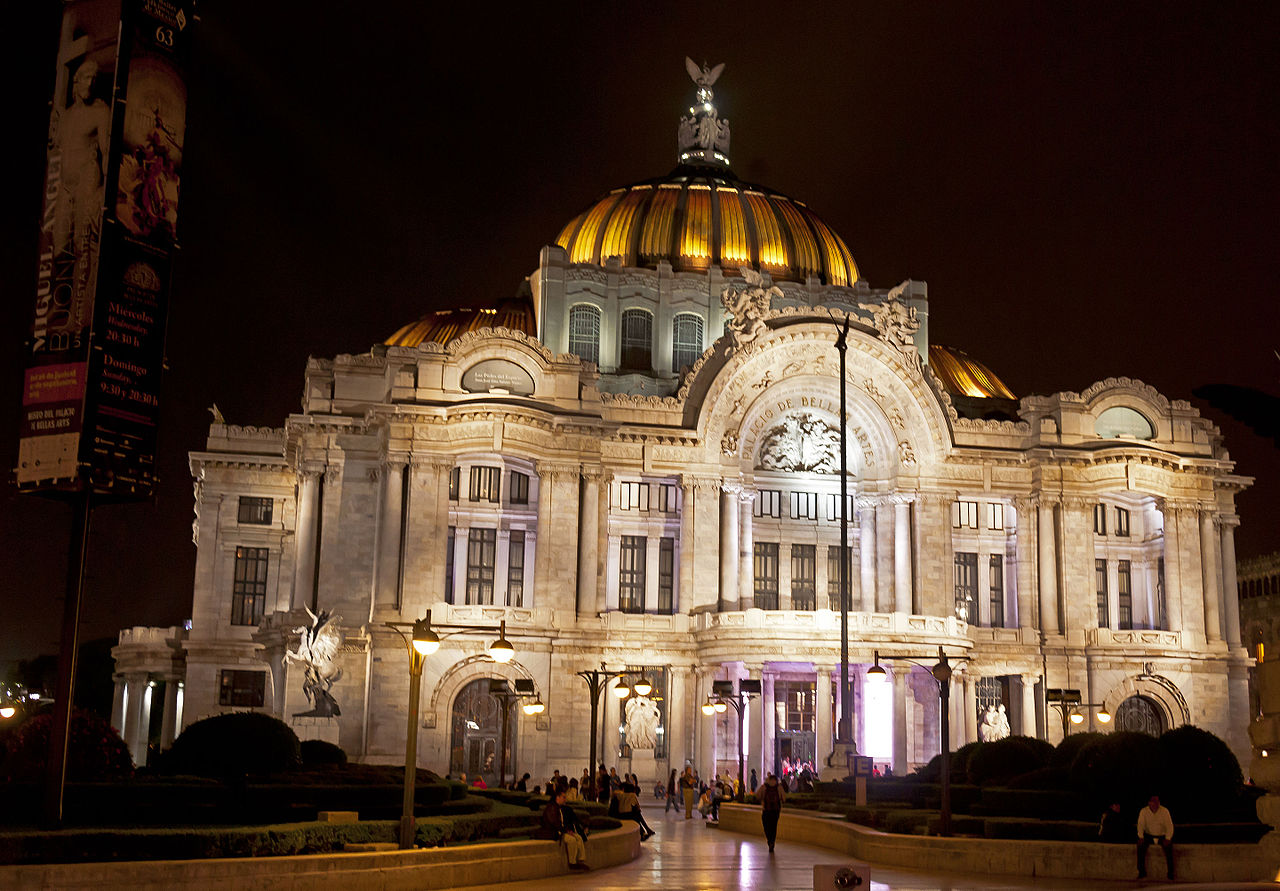
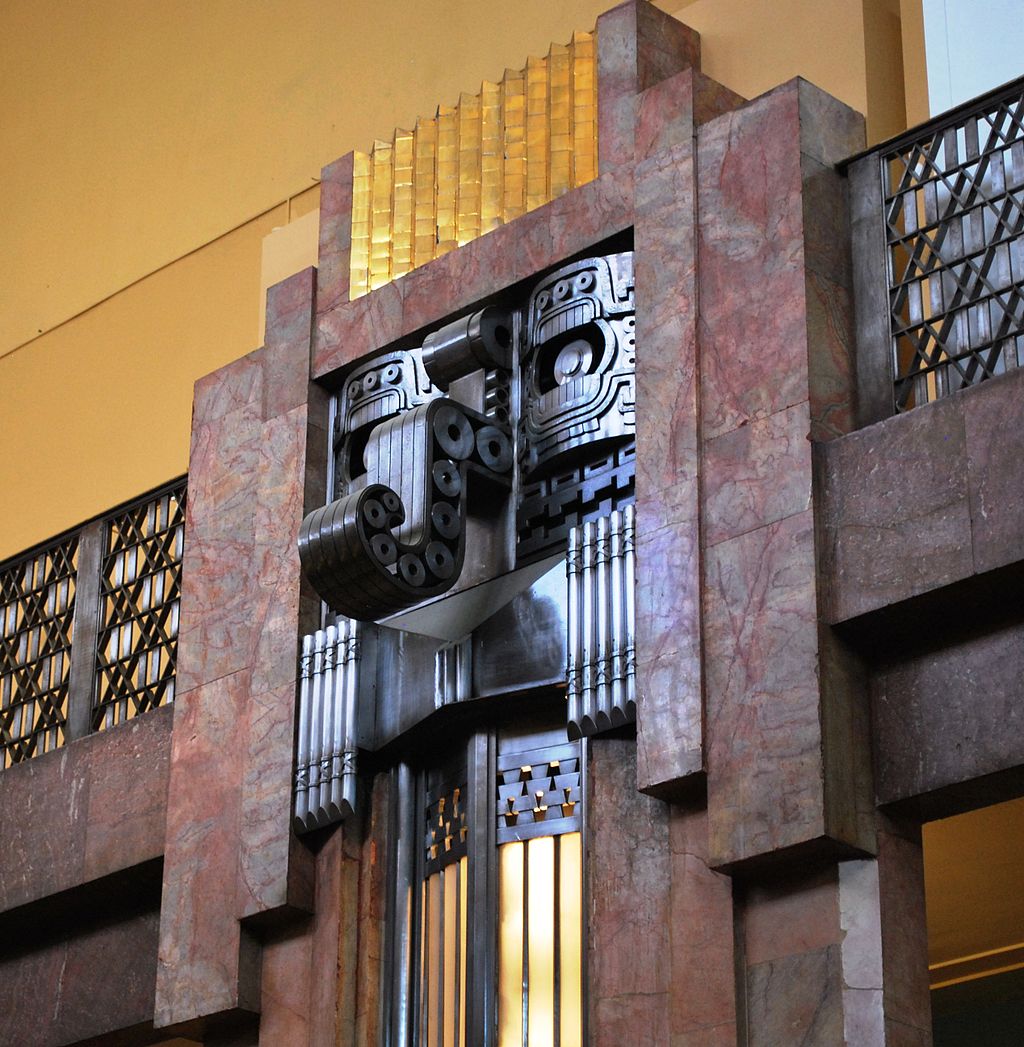
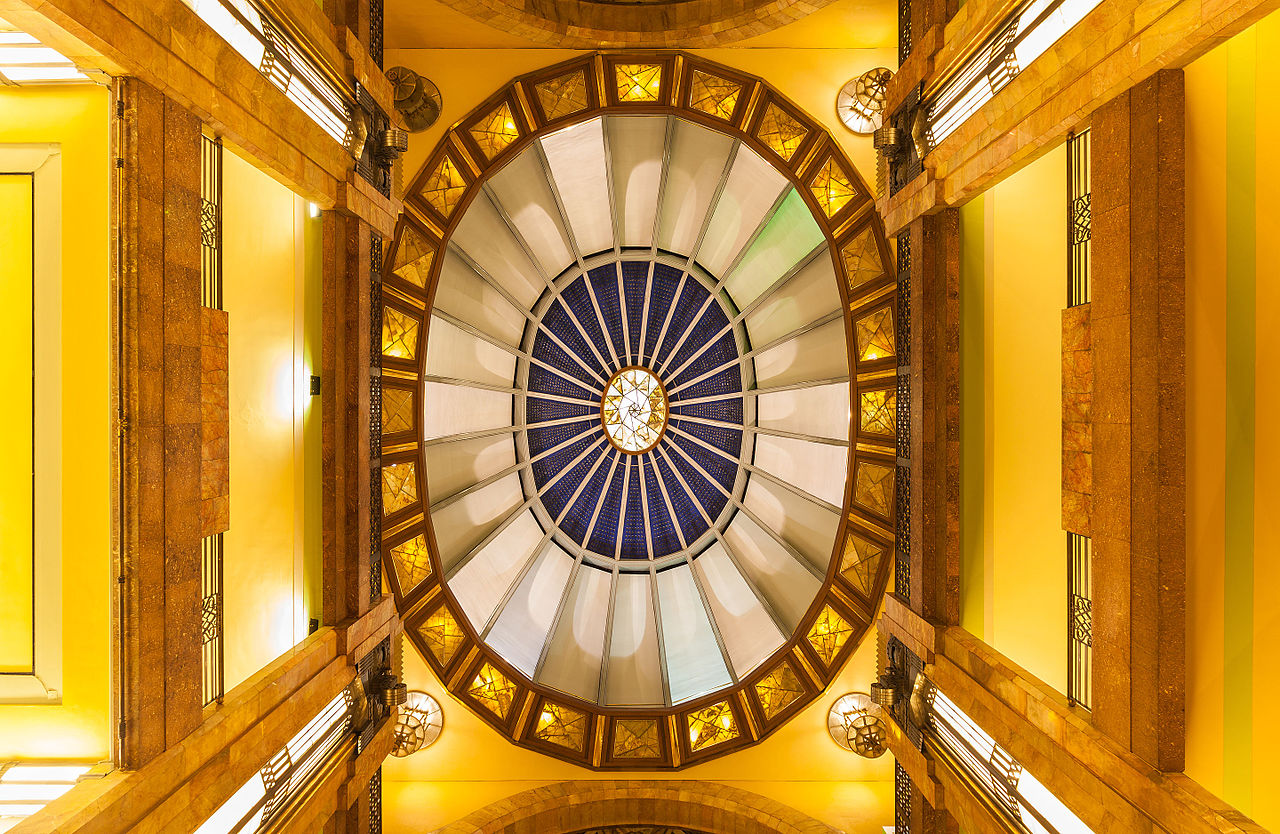
Main hall
It has capacity for 1 677 people and a twenty-four meter long stage.4 In it is the large fire curtain (unique in the world within an opera house) with the image of the Mexican volcanoes Popocatépetl and Iztaccíhuatl, and a weight of 24 tons. This curtain was commissioned to the Tiffany House in New York as a huge puzzle. On the ceiling of the room is the crystal lamp, which was designed by the Hungarian Geza Marotti and depicting the Greek god Apollo surrounded by the muses of the arts. The National Symphony Orchestra, the National Theater Company, the National Opera Company and the National Dance Company present their regular seasons at this venue.
主廳
它可容納1677人,舞台長24米。4其中有巨大的防火簾(世界上唯一的歌劇院內),上面有墨西哥火山Popocatépetl和Iztaccíhuatl的圖像,以及 重量為24噸。 窗簾被委託到紐約的蒂芙尼宮作為一個巨大的難題。 房間的天花板上是水晶燈,它是由匈牙利人格薩·馬洛蒂(Geza Marotti)設計的,描繪了被藝術靈感包圍的希臘神阿波羅(Apollo)。 國家交響樂團,國家劇院公司,國家歌劇院公司和國家舞蹈團在此場地演出常規音樂。
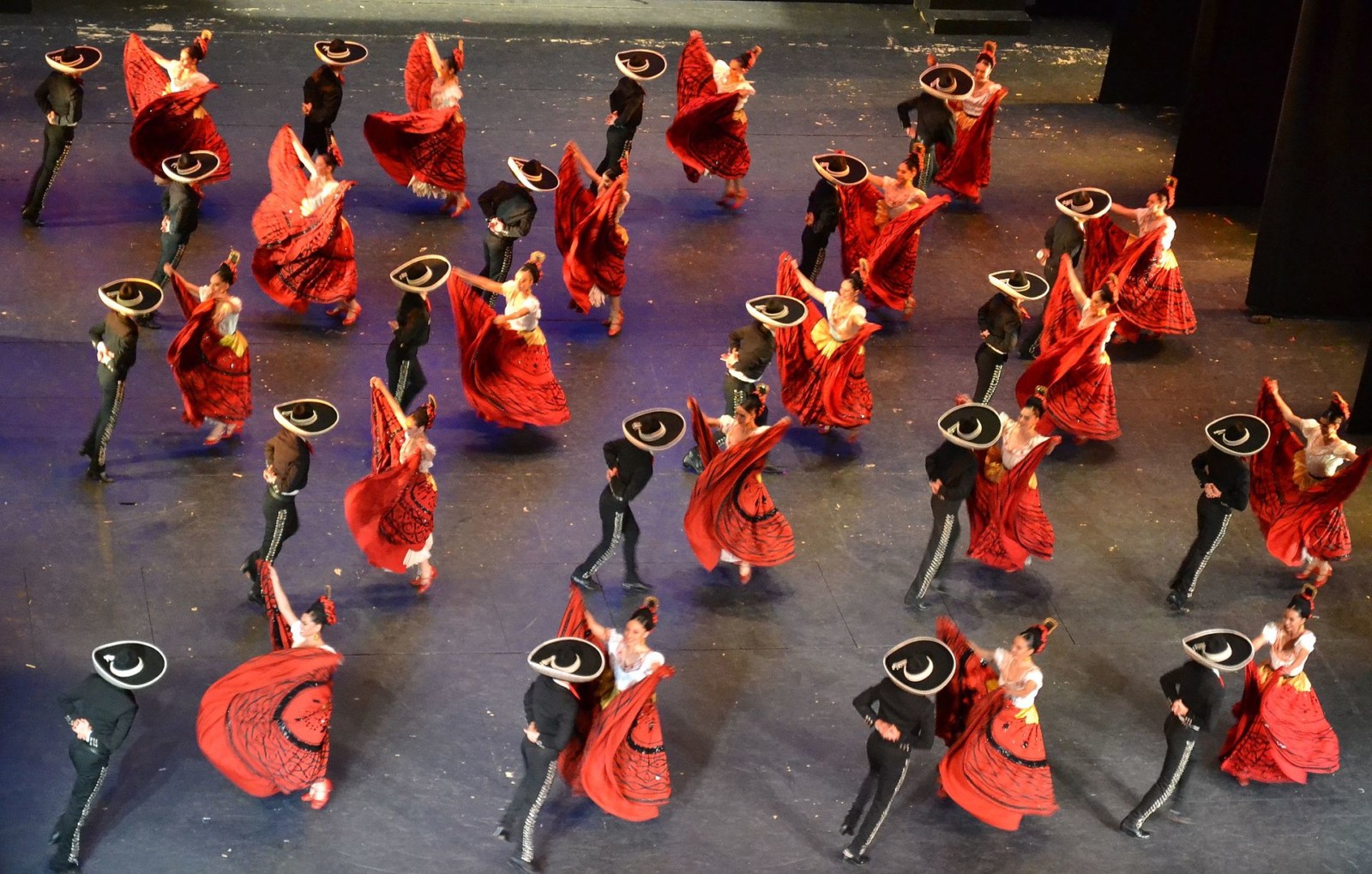
Manuel M. Ponce Room
It is the second in importance and in number of activities. It offers literary, musical, operatic activities and exhibitions, among others. It is located on the first floor, on the east side. His name commemorates the Mexican composer of the same name.
曼努埃爾·M·龐塞會議室
在活動數量和數量上,它是第二位。 它提供文學,音樂,歌劇活動和展覽等。 它位於一樓,東側。 他的名字紀念同名墨西哥作曲家。
Adamo Boari Room
It carries out activities such as editorial presentations, exhibitions and conferences. It is located under the lobby of the main hall, on the west side.
Adamo Boari房間
它進行各種活動,如社論演示,展覽和會議。 它位於西側主大廳的下方。
Palace of Fine Arts Museum
The Museum of the Palace of Fine Arts is the organization that handles permanent murals and other works of art in the building, as well as organizing temporary exhibitions. These exhibits cover a wide range of media and present Mexican and international artists, focusing on classical and contemporary artists.
The floors between the ground floor and the upper floor are dominated by a series of murals painted by most of the famous names of Mexican muralism. On the second floor there are two works from the early 1950s of Rufino Tamayo: Mexico today and Birth of the nationality, a symbolic representation of the creation of the mestizo (person of mixed indigenous and Spanish descent) identity. On the west end of the third floor is The Man Controller of the Universe, originally commissioned by the Rockefeller Center in New York in 1933. The mural shows a variety of technological and social issues. (such as discoveries made possible by microscopes and telescopes) and was controversial for his inclusion of Lenin and a Soviet parade on May 1. The Rockefellers were not happy with the painting and the incomplete work was finally destroyed and painted. Diego Rivera recreated it here in 1934. On the north side of the third floor are David Alfaro Siqueiros’ new democracy and Rivera’s Carnival of Mexican Life (four parts); To the east is the catharsis of José Clemente Orozco, which represents the conflict between the “social” and “natural” aspects of humanity.
美術宮博物館
美術宮博物館是處理建築物中永久壁畫和其他藝術作品以及組織臨時展覽的組織。 這些展品涵蓋了廣泛的媒體以及墨西哥和國際藝術家,主要針對古典和當代藝術家。
一樓和二樓之間的樓層由一系列壁畫所主導,這些壁畫以墨西哥壁畫的大多數著名名字作畫。在二樓,有兩幅1950年代初Rufino Tamayo的作品:今天的墨西哥和國籍的誕生,象徵著混血兒(土著和西班牙血統混合的人)身份的創造。在三樓的西端是最初由紐約洛克菲勒中心(Rockefeller Center)於1933年委託的《宇宙人》(The Man Controller of Universe)。壁畫展示了各種技術和社會問題。 (例如通過顯微鏡和望遠鏡實現的發現),並因他將列寧和5月1日的蘇聯閱兵而引起爭議。洛克菲勒人對這幅畫不滿意,不完整的作品最終被毀和畫了出來。迭戈·里維拉(Diego Rivera)於1934年在這裡重建了它。在三樓的北側是大衛·阿爾法羅·西奎羅斯(David Alfaro Siqueiros)的新民主主義和里維拉(Rivera)的墨西哥人狂歡節(墨西哥狂歡節)(四部分)。在東方是何塞·克萊門特·奧羅斯科(JoséClemente Orozco)的宣洩,它代表了人類“社會”與“自然”方面之間的衝突。

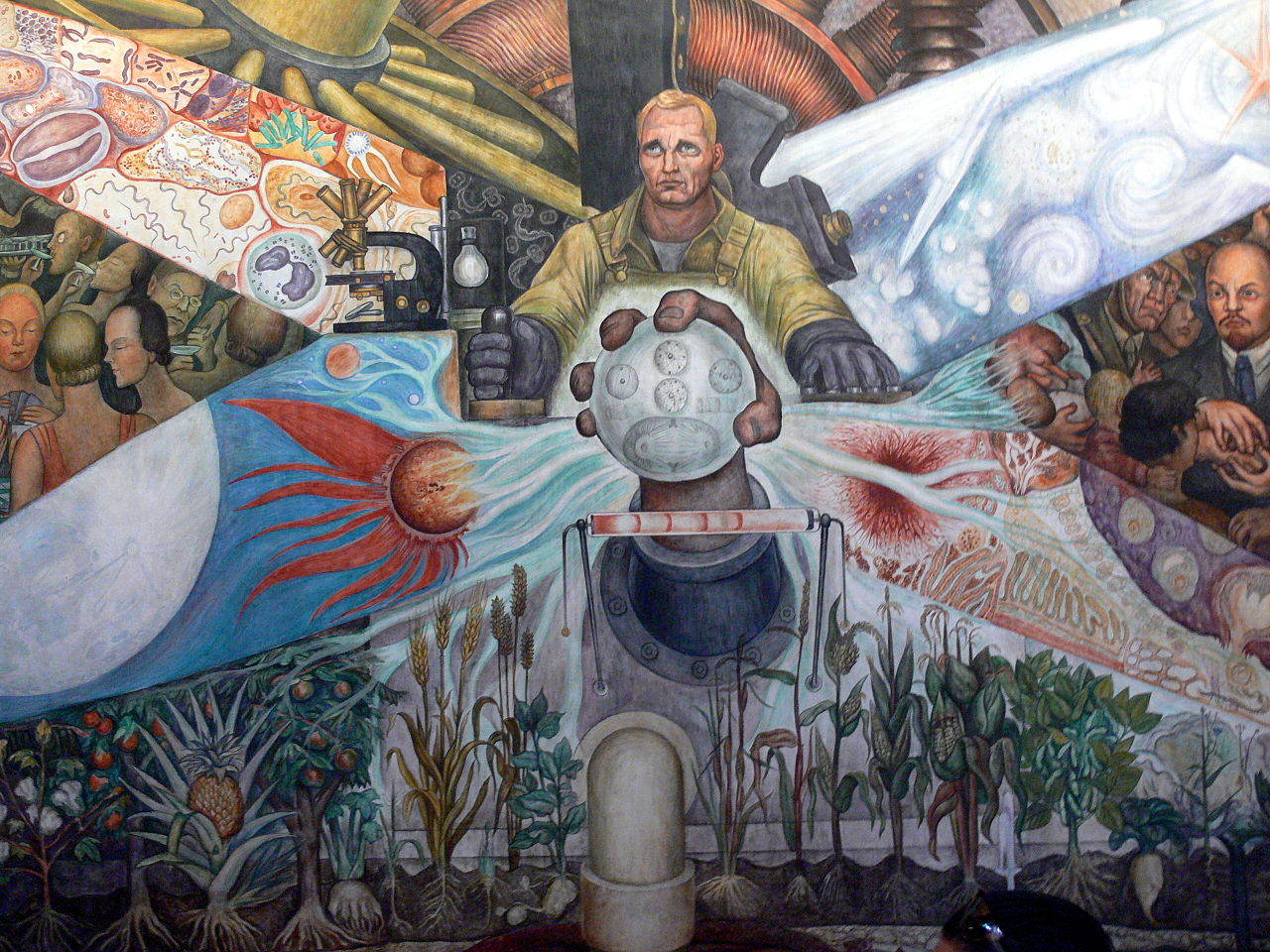
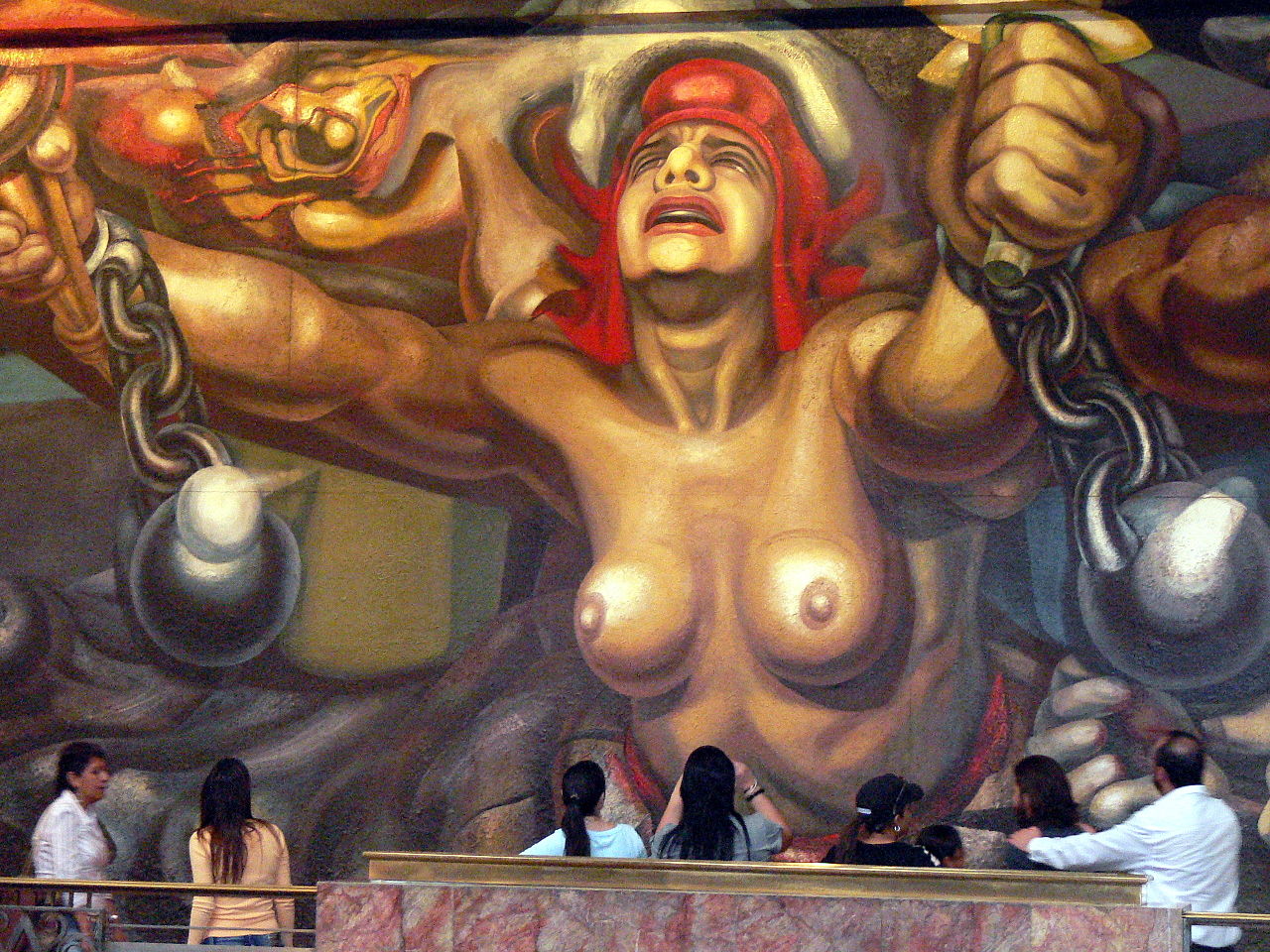
National Museum of Architecture
The National Museum of Architecture occupies the top floor of the building, covered by a glass and iron roof. It contains exhibitions of renowned Mexican architects, including models, plans and photographs of important works. This museum also organizes temporary exhibitions of its collections in other facilities. The objective is to expose the Mexican public to the rich architectural heritage of the country. Some of the leading architects presented at the museum include Jaime Ortiz Monasterio, Carlos Mijares Bracho, Adamo Boari and Luis Barragán. The museum is divided into four sections called “Architecture-contrasts: Jaime Ortiz Monasterio and Carlos Mijares Bracho”, “Urban Corpus of Mexico City”, “National Theater of Mexico (Original Plan)” and “National Theater of Mexico”. There are also temporary exhibitions on contemporary architecture.
國家建築博物館
國家建築博物館位於建築物的頂層,由玻璃和鐵製的屋頂覆蓋。 它包含墨西哥著名建築師的展覽,包括模型,平面圖和重要作品的照片。 該博物館還在其他設施中組織其藏品的臨時展覽。 目的是使墨西哥公眾了解該國豐富的建築遺產。 在博物館展出的一些著名建築師包括Jaime Ortiz Monasterio,Carlos Mijares Bracho,Adamo Boari和LuisBarragán。 博物館分為四個部分,分別稱為“建築對比:Jaime Ortiz Monasterio和Carlos Mijares Bracho”,“墨西哥城城市語料庫”,“墨西哥國家劇院(原始計劃)”和“墨西哥國家劇院”。 也有關於當代建築的臨時展覽。
Corner of time
Photographic, documentary and sound materials, as well as objects, among others, are presented in exhibitions prepared by the historical heritage of the site, to provide visitors with the opportunity to learn about the rich history of the Palace of Fine Arts.
時間的角落
攝影,文獻和聲音材料以及其他物品,都在該網站的歷史遺產舉辦的展覽中展出,以使參觀者有機會了解美術宮的悠久歷史。
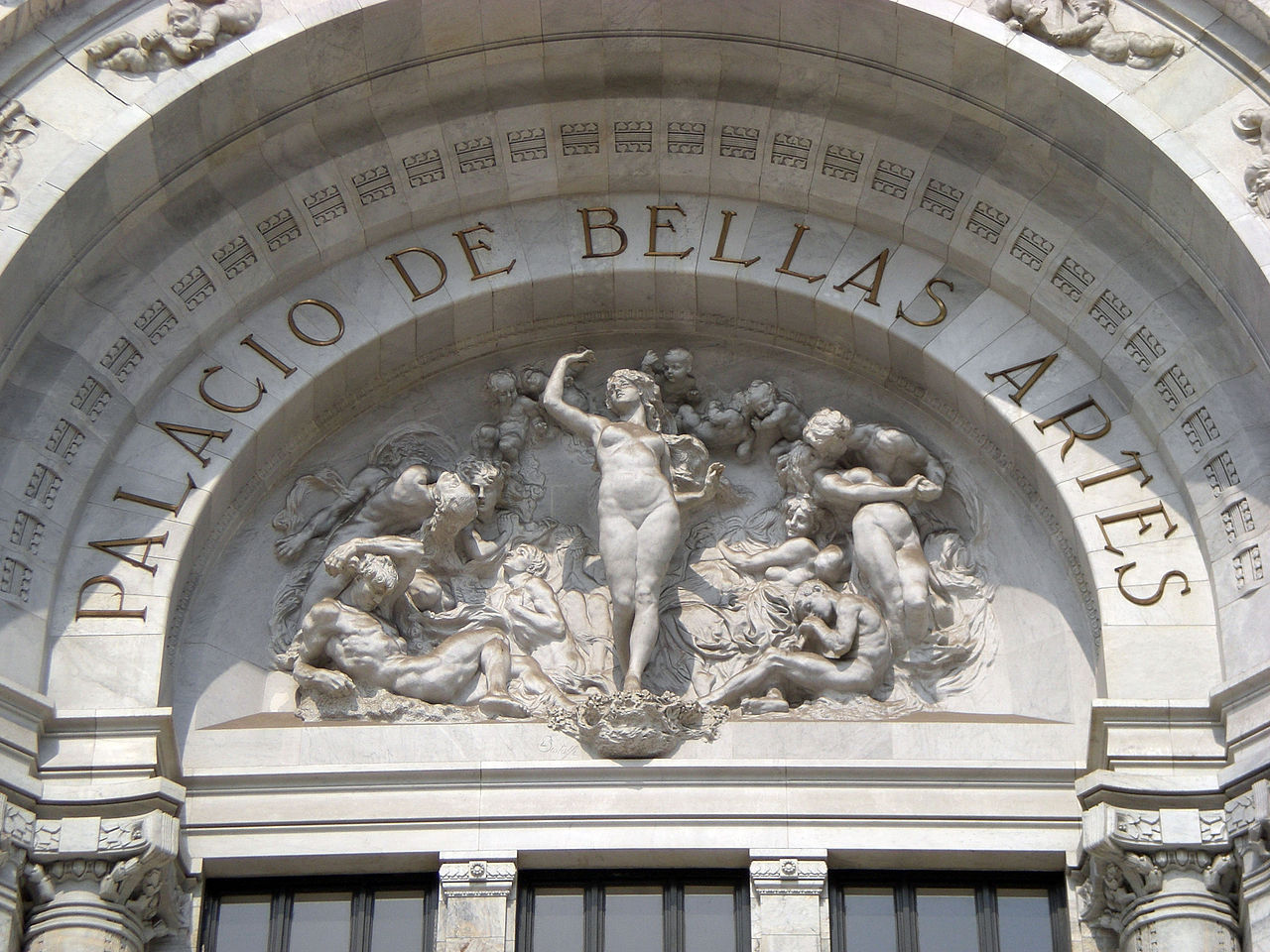
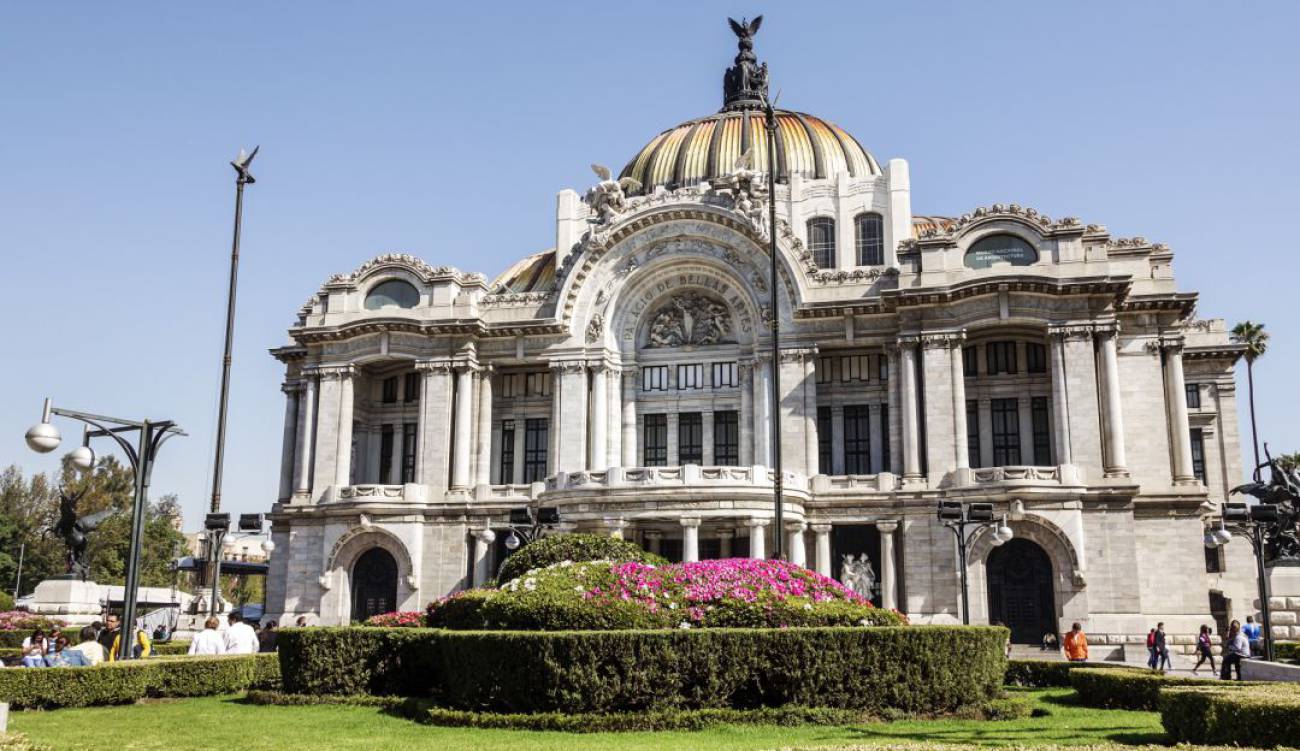
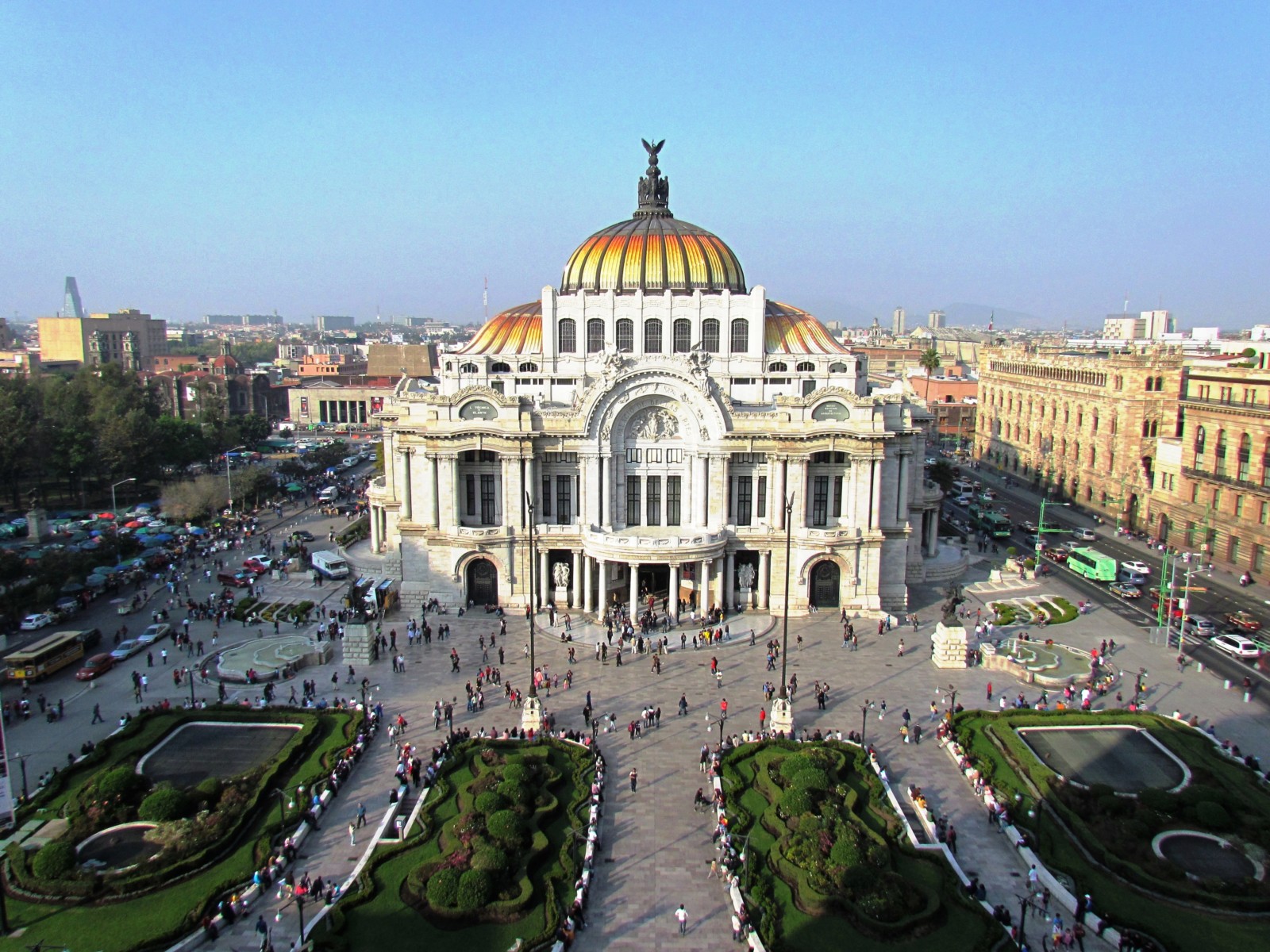
FROM:https://es.wikipedia.org/wiki/Palacio_de_Bellas_Artes_(Ciudad_de_M%C3%A9xico)
FROM:Documenting the Palacio de Bellas Artes
FROM:Palacio de Bellas Artes | World In Drone
Don’t you think it’s addictive?
Want to know more about the beauty of architecture?
Come and join our members to explore the beauty of architectural design.
覺得看得不過癮嗎?
想要知道更多建築之美嗎?
快來加入我們的會員,一同探索建築設計之美。
The above article is purely for appreciation and sharing purposes, as well as the construction of new technology and the public can be in-depth understanding of the information at the same time there are sources, will be able to query, no use of the document as a commercial transaction, if illegal, please inform the We will immediately remove the site, thank you for cooperation.
以上文章純粹作為欣賞及分享用途,以及將建築新型技術傳遞給與大眾能夠深入了解,同時資料還有來源,將可查詢,絕無使用該文件資料作為商業交易行為,如有違法請務必告知該網站我們將立即處理撤除,謝謝合作。
The FV360 website provides information and introductions for many designers, architects, investors and manufacturers. If you want your work to be seen internationally, please provide the project photo and data sheet.
FV360網站是提供許多設計師建築師與投資方及廠家等相關資訊與介紹,若您希望您的作品讓國際看見,請您提供專案照片與資料圖面
The FV360 website can also provide many manufacturers to sell their own products. If you want your products to be seen by the international community, please provide the project photos and materials.
Contact: info@futureview360.com
There will be someone to serve you.
FV360網站亦能提供許多廠家放置自家產品銷售,若您希望您的產品讓國際看見,請您提供專案照片與資料
聯繫方式:info@futureview360.com
會有專人為您服務

